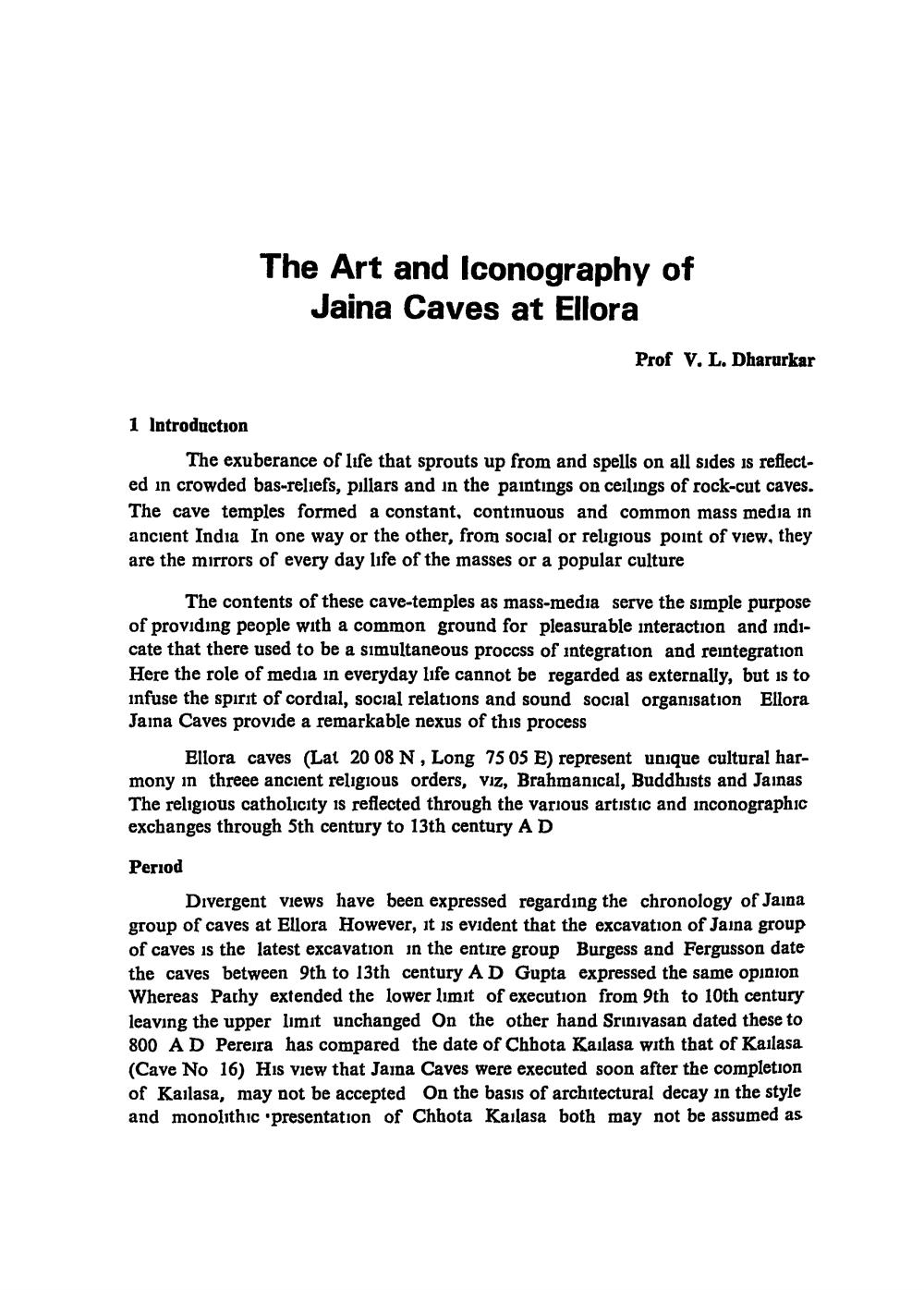________________
The Art and Iconography of Jaina Caves at Ellora
Prof V. L. Dharurkar
1 Introduction
The exuberance of life that sprouts up from and spells on all sides is reflected in crowded bas-reliefs, pillars and in the paintings on ceilings of rock-cut caves. The cave temples formed a constant, continuous and common mass media in ancient India In one way or the other, from social or religious point of view, they are the mirrors of every day life of the masses or a popular culture
The contents of these cave-temples as mass-media serve the simple purpose of providing people with a common ground for pleasurable interaction and indicate that there used to be a simultaneous process of integration and reintegration Here the role of media in everyday life cannot be regarded as externally, but is to infuse the spirit of cordial, social relations and sound social organisation Ellora Jama Caves provide a remarkable nexus of this process
Ellora caves (Lat 20 08 N, Long 75 05 E) represent unique cultural harmony in threee ancient religious orders, viz, Brahmanical, Buddhists and Jainas The religious catholicity is reflected through the various artistic and inconographic exchanges through 5th century to 13th century A D
Period
Divergent views have been expressed regarding the chronology of Jaina group of caves at Ellora However, it is evident that the excavation of Jaina group of caves is the latest excavation in the entire group Burgess and Fergusson date the caves between 9th to 13th century AD Gupta expressed the same opinion Whereas Pathy extended the lower limit of execution from 9th to 10th century leaving the upper limit unchanged On the other hand Srinivasan dated these to 800 AD Pereira has compared the date of Chhota Kailasa with that of Kailasa (Cave No 16) His view that Jaina Caves were executed soon after the completion of Kailasa, may not be accepted On the basis of architectural decay in the style and monolithic presentation of Chhota Kailasa both may not be assumed as




